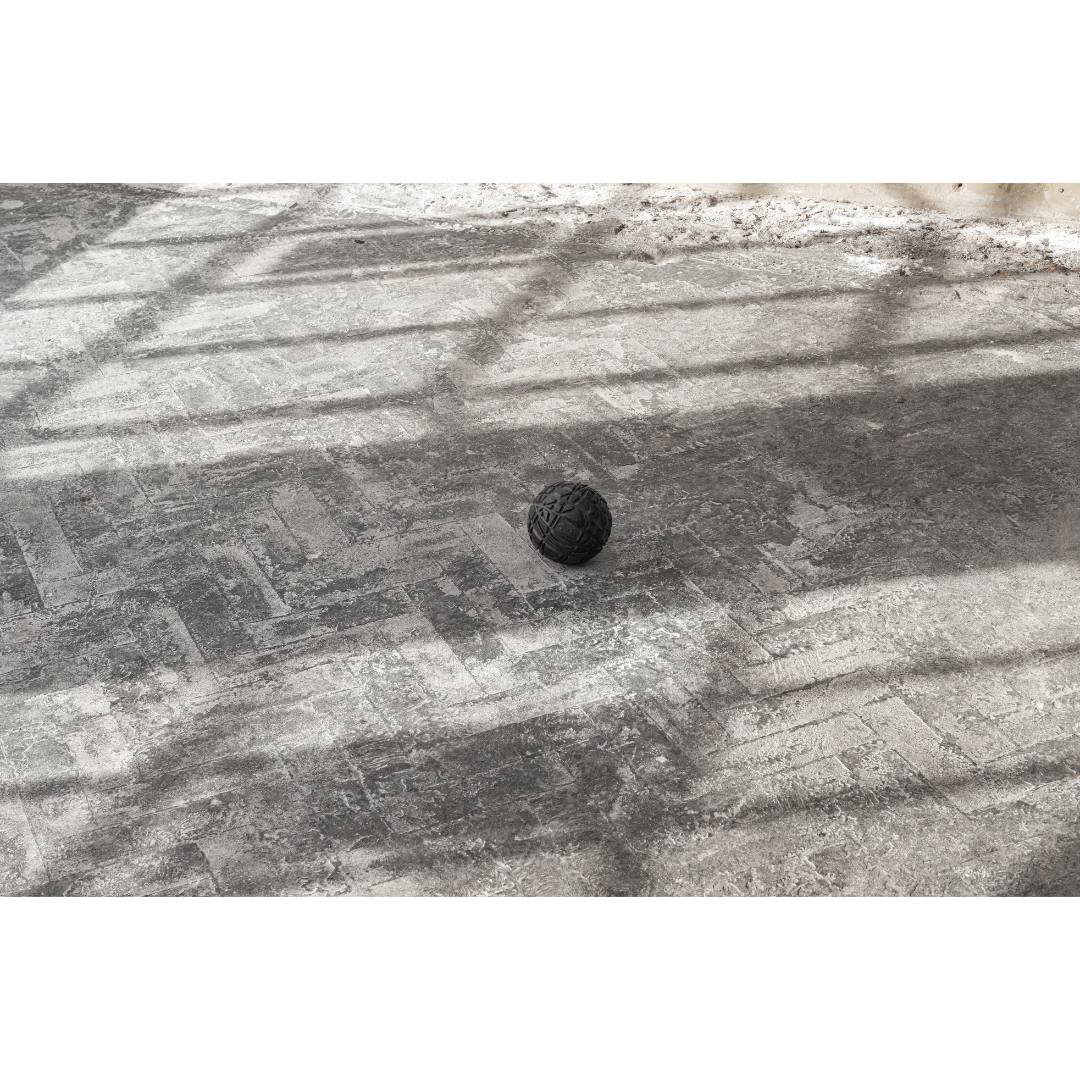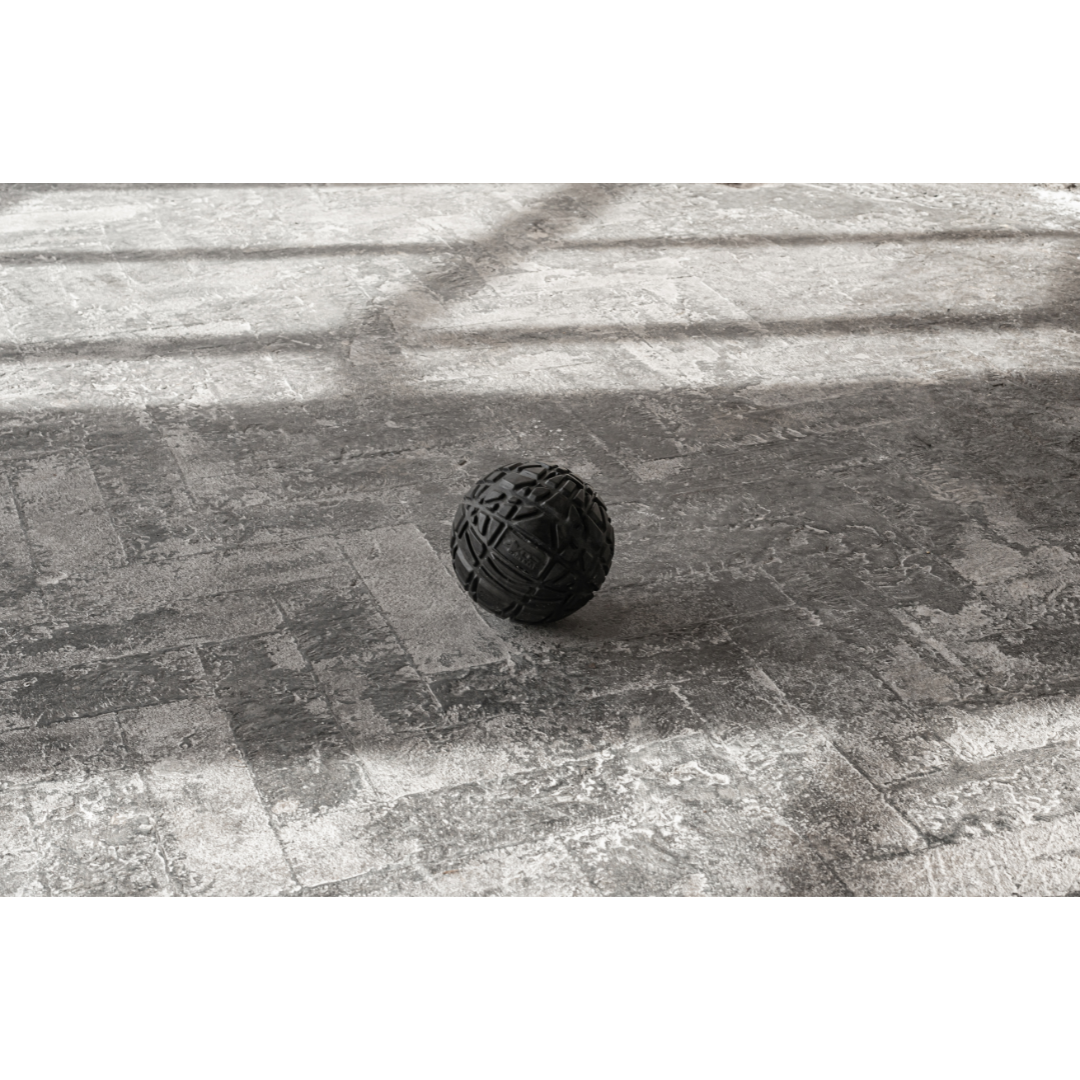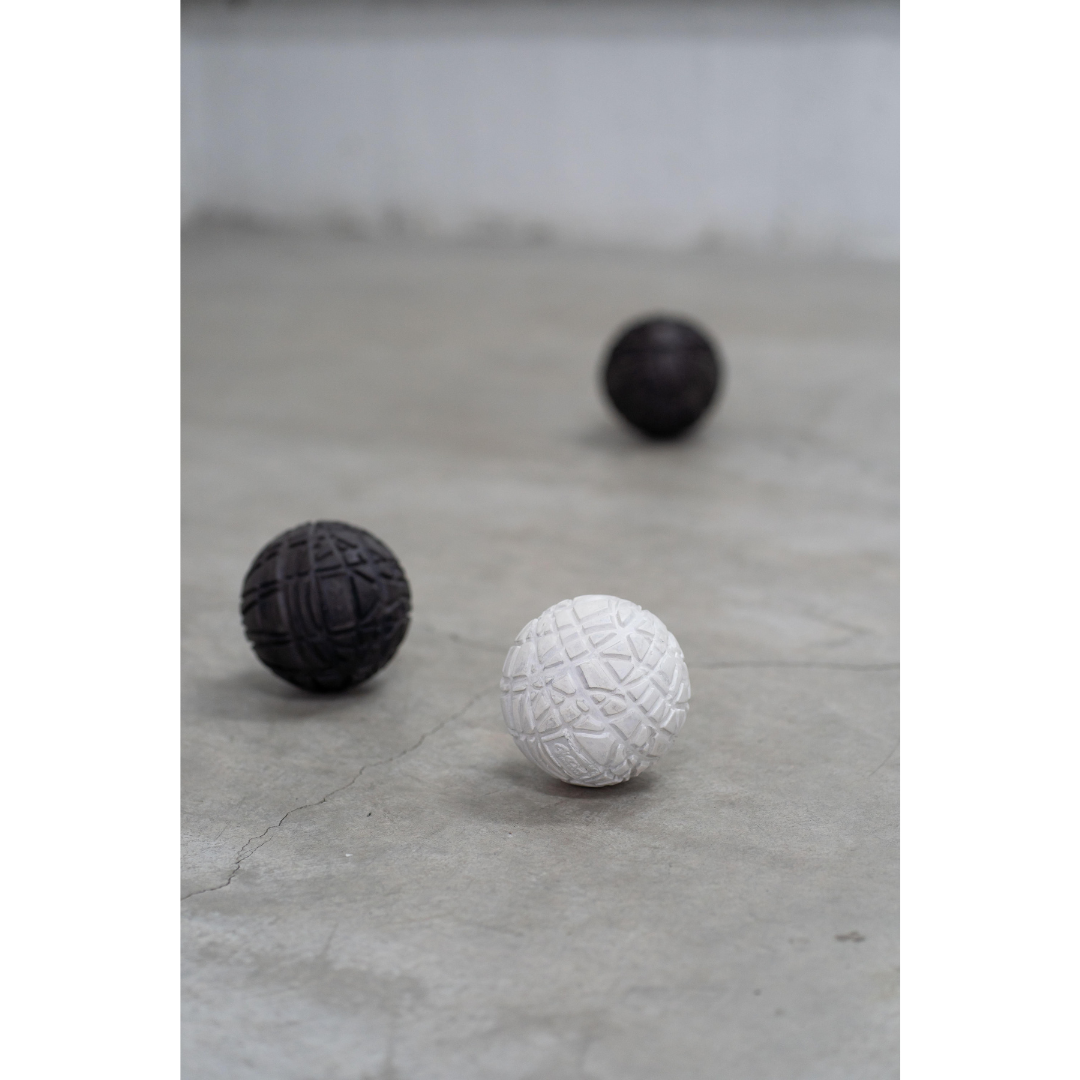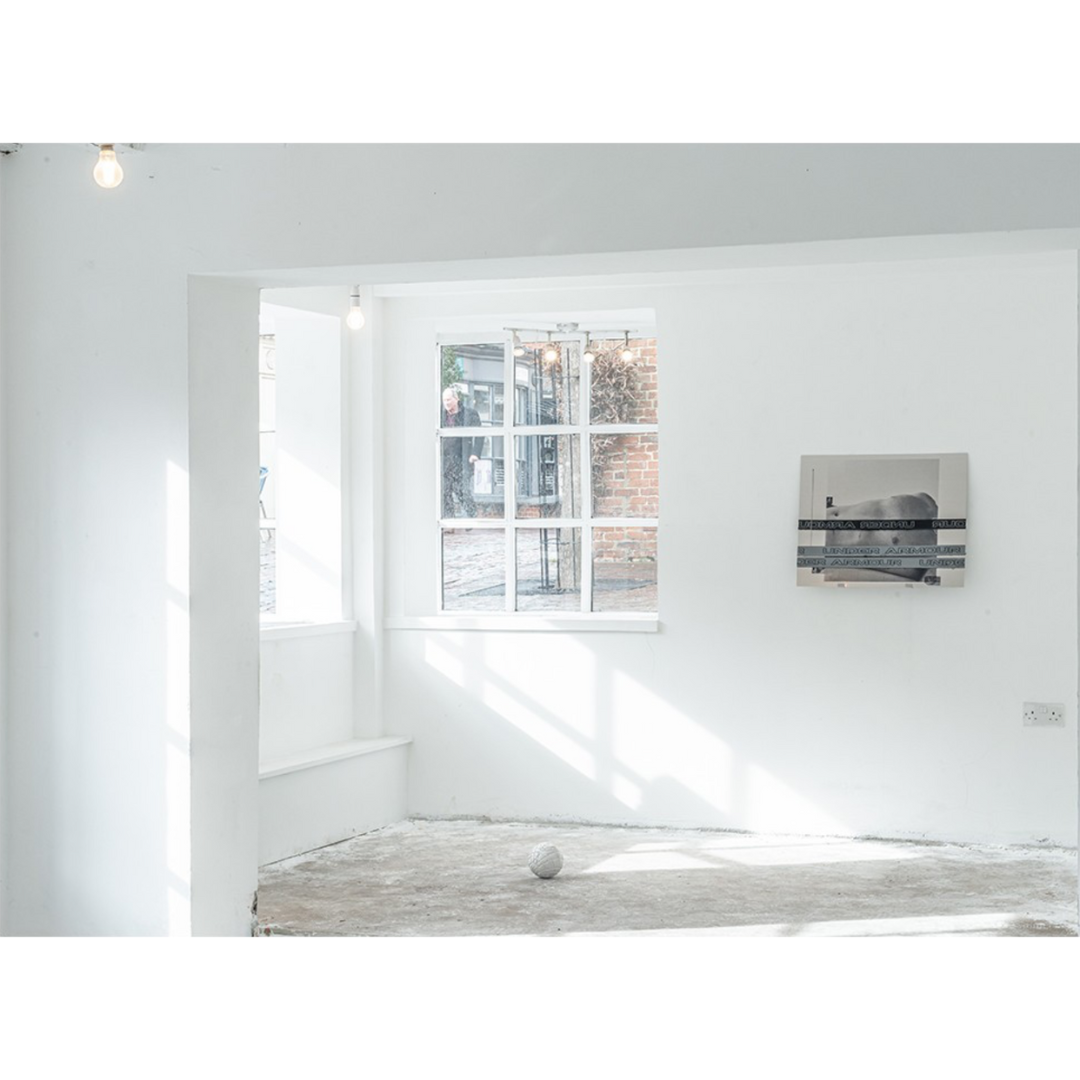







Close Considerations
Sculptural biomimicry: The sculpture utilises a plaster cast of a pre-existing rubber muscle ball. Unlike many of Papandreopoulos's other works, this sculpture maintains the original dimensions and from of the source, which with its spherical form evokes a primal and instinctive psychological resonance within the viewer or play.
Chromatic classicism: The colour palette of the work is a neutral, austere monochrome reminiscent of marble. This aesthetic choice evokes the visual characteristics of classical Hellenic sculpture and touches on mythological narratives, particularly the myth of Sisyphus.
Recontextualisation: The ball sculpture, in its spherical form, might initially appear enticing to viewers, like a ball presented to a cat. However, upon closer inspection, the sculpture's hardness and weight disrupts this initial perception.
Accessibility: Its naturalistic placement on the floor brings it closer to its source form, emphasising accessibility and realism, for the intended interaction and the resulting element of surprise.




Process
Archival research and historical context: Papandreopoulos undertook extensive historical research on materials associated with bodybuilding, gym equipment, and supplements etc. (references in the next section).
Biomaterial integration for haptic experience: The work itself is a cast sculpture meticulously crafted with a 50/50 mixture of plaster and testosterone powder. The moulding process utilised a real muscle ball as a template to achieve the desired consistency, texture, and weight for the performative physical interaction.
Materially embodiment: By combining plaster with testosterone powder, Papandreopoulos creates an object that physically embodies the concept of transformation, central to the practice of bodybuilding. The material itself contributes to the hardened form, alluding to the literal effects of such supplements on muscular development.




References
Bodybuilding and Fitness Culture Evolution: Theo Papandreopoulos's groundwork for this sculpture work involved a historical analysis focusing on bodybuilding. His research cantered on bodybuilding magazines published in the United States during the 1960s and 1970s and the visual representations of contemporary fitness culture online.
“Lift” and “Gender Trouble”: The book "Lift" by Daniel Kunitz, provides a historical examination of fitness practices, tracing their development from ancient Hellenic to the Victorian era and beyond, played a significant role in the conceptualisation of this work, along with Judith Butler's "Gender Trouble" which informed his broader outlook on performativity of gender enacted through social practices.
Military Attire: Papandreopoulos's work utilises historical uniform reference books and catalogues as a source for the semiotic analysis of military attire across various cultures. This analysis delves into the symbolic meanings embedded in different uniform elements, enabling an exploration of how cultures use clothing to construct and communicate power.
Authoritarian aesthetic discourse: Papandreopoulos’s monumental, banal objects reference the historical practice of using scale to reinforce power. He has mentioned the colossal pharaoh statues of ancient Egypt, where size directly correlated with a ruler's authority, and more recently, collectivist regimes like Nazi Germany and the Soviet Union employed oversized sculptures of idealised bodies, to overwhelm viewers and instil awe, reinforcing the state's supposed invincibility, right to control as well as to direct citizens’ aspirations.
Tom of Finland’s erotic deviance: Papandreopoulos identifies an aesthetic parallel between the exaggerated masculinity depicted by the collectivist regimes of Nazi Germany and the Soviet Union and Tom of Finland's work which directly deals with their sexual appeal, which the former was fundamentally against. Tom of Finland's work utilises extreme versions of masculinity in uniforms, blurring the line between art and pornography. This reference presents masculinity as a potentially transgressive concept as an individualised erotic deviance in its own right.
Military conscription: A lot of Papandreopoulos’s art practice draws influence from his experience in the Greek military. This experience sharpened his observations of symbols used to establish and reinforce hierarchies and power structures. These symbols can be observed in the imposition of stoic aesthetics, adherence to austerity, enforced uniformity, and emphasis on order. Notably, these elements extend beyond the military context, influencing civilian life through state and corporate control mechanisms.
Samuel Beckett’s examination of disoriented masculinity: The exhibition title originated from Samuel Beckett's short story titled "Echo's Bones," which explores themes of violence and manhood. The regimented life depicted in Papandreopoulos's "Echo's Bones" exhibition, mirroring Beckett's characters in Theatre of the Absurd plays, reflects a potential loss of identity. This suggests a parallel between the disorientation experienced by soldiers in a highly structured environment and the struggles faced by contemporary men grappling with traditional notions of masculinity.
Francis Bacon’s examination of power: By analysing the connections between Samuel Beckett's penultimate work and Francis Bacon's late paintings, a link can be established with Papandreopoulos's practice. All three artists explore the nature of masculinity, portraying it as a constantly shifting concept characterised by doubt and complexity. Their work suggests that male identity is not fixed but rather allows for fluidity and the potential for transformation.




